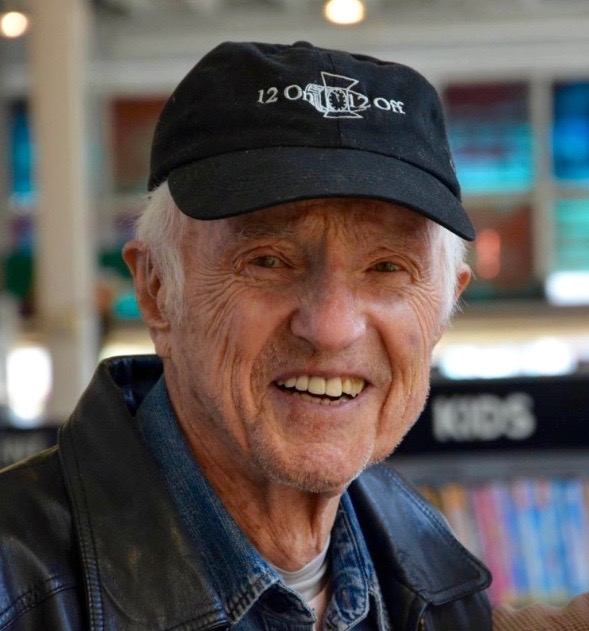ABOUT
• February 6, 1922 – December 27, 2015 •
Haskell Wexler began his feature filmmaking career as a cinematographer in the late 1950s, having previously shot educational and industrial films. The Chicago native had traveled to California to attend Berkeley, but dropped out after one year. He served as a merchant seaman during WWII and then returned to Illinois. Wexler and his father purchased and refurbished an armory in Des Plaines, turning it into a film studio. The venture was unsuccessful and Wexler set out to learn about film production, beginning as a cameraman and eventually working up to cinematographer.
“Stakeout on Dope Street” (1958) marked his first (although uncredited) work as a cinematographer. He went on to shoot several features, many, like “The Hoodlum Priest” (1961), noted for their social themes. Wexler has stated that Elia Kazan’s “America, America” (1963) marked the turning point in his Hollywood career and includes “some of the best photography” that he shot. He went on to shoot the intense, claustrophobic black and white images of Mike Nichols’ “Who’s Afraid of Virginia Woolf?” (1966), which earned him an Oscar, as well as providing memorable and distinctive looks to Norman Jewison’s “In the Heat of the Night” (1967), George Lucas’ “American Graffiti” (1973) and Milos Forman’s “One Flew Over the Cuckoo’s Nest” (1975). His beautiful rendering of the muted tones of the American Dust Bowl (including several storms) in Hal Ashby’s “Bound for Glory” (1976) earned him a second Oscar for Best Cinematography. Wexler also lensed Ashby’s Vietnam-era “Coming Home” (1978), John Sayles’ union-busting tale “Matewan” (1987), the urban gang drama “Colors” (1988), the biopic “Blaze” (1989) and “The Babe” (1992), Sayles’ Irish fable “The Secret of Roan Inish” (1994) and the period crime drama “Mulholland Falls” (1996).
Wexler has produced, written, directed and/or photographed a number of documentary films in his long career. Among the highlights are “The Bus” (1965) and its sequel, “Bus II” (1983), the Oscar-winning short “Interviews With My Lai Veterans” (1970), “Brazil: A Report on Torture” (1971), “Introduction to the Enemy” (1974), co-directed with Jane Fonda, Tom Hayden and Bill Yahrans, “CIA: Case Officer” (1978) and “At the Max” (1991), which recorded the 1990 European tour of the Rolling Stones. Wexler was also one of several directors of photography interviewed for the superlative “Visions of Light: The Art of Cinematography” (1992).
A passionate liberal, Wexler produced, directed, wrote and photographed one of the most devastating and technically sophisticated anti-establishment films ever made, “Medium Cool” (1969). Drawing on the stylistic and theoretical advances made by such vanguard figures as Jean- Luc Godard, and taking its title almost straight from the mouth of media guru Marshall McLuhan, “Medium Cool” was set and filmed during the 1968 Chicago Democratic convention. It chronicles– in striking, neo-documentary style–the affairs, both professional and amorous, of a detached TV news cameraman (Robert Forster) as he becomes increasingly aware of the political ramifications of his work. The film remains a landmark of political cinema, and an insightful essay on the “cool medium.” Wexler also helmed “Latino” (1985), a taut drama about an Hispanic Vietnam veteran (Robert Beltran) assisting in the training of the US-backed Contras in Nicaragua. The film divided critics and audiences along partisan political lines.
For TV, Wexler shot footage of the Special Olympics included in the Beau Bridges- directed longform “The Kid From Nowhere” (NBC, 1982), worked with renowned cinematographer Robert Richardson on the second unit work of the thirty-minute film “To The Moon, Alice” (Showtime, 1990) and was primary director of photography for the Japan tour sequences of the documentary “Benny Carter: Symphony in Riffs” (A&E, 1992).
Awards
- American Society of Cinematographers Lifetime Achievement Award 1992
- American Society of Cinematographers Award Best Cinematographer for Feature Films Blaze” 1989
- Independent Spirit Award Best Cinematography “Matewan” 1987
- Los Angeles Film Critics Association Award Best Cinematography “Bound For Glory” 1976
- National Society of Film Critics Award Best Cinematography “Bound for Glory” 1976
- Oscar Best Cinematography “Bound For Glory” 1976
- National Society of Film Critics Award Best Cinematography “In the Heat of the Night” 1967
- Oscar Best Cinematography (Black-and-White) “Who’s Afraid of Virginia Woolf?” 1966
Milestones
- 2001 Earned Emmy nomination for lensing of the HBO movie “61*”
- 1996 Received Star No. 2062 on the Hollywood Walk of Fame (February 28)
- 1976 First film appearance in “Underground” (documentary)
- 1969 Feature film writing and directing debut (also director of photography; producer), “Medium Cool”
- 1965 Co-produced (with John Calley) Tony Richardson’s “The Loved One” (also director of photography)
- 1965 Documentary directing and screenwriting debut, “The Bus” (also producer; director of photography) 1959 First on-screen credit for cinematography, “Five Bold Women”
- 1958 First film as director of photography (uncredited), “Stakeout on Dope Street”
- Merchant Seaman during World War II (spent two weeks in lifeboat after ship was sunk)
- With father, purchased armory in Des Plaines, IL and started a film studio
- Closed studio and began working as cameraman
- Worked as cameraman and later cinematographer on industrial and educational films
- Co-founded with Conrad L Hall, Wexler-Hall, Inc., a TV commercial production company, in mid-1970s
***** ***** ***** ***** ***** ***** *****
